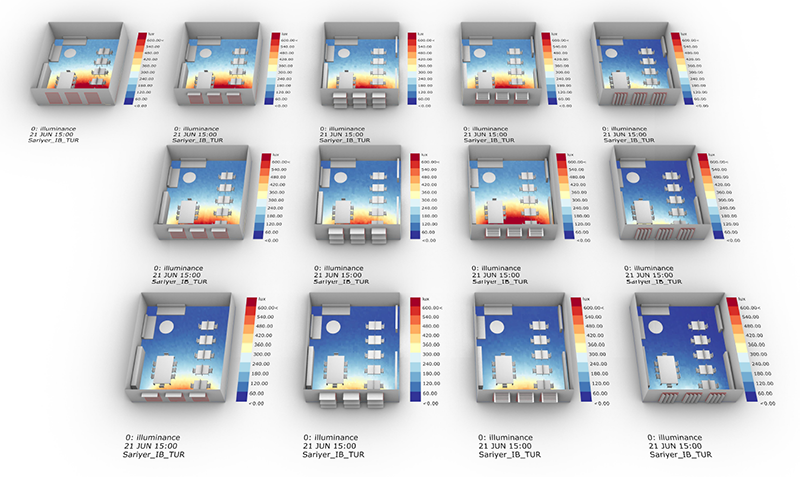
An Intersection of Architecture and Nature: Daylight
Interaction with daylight is one of the most critical parameters in shaping the mass from the very beginning of the design. Thanks to the advanced software and computing infrastructure, the variables of the structure and daylight interaction can be analyzed quickly by trying many different variations. This approach gradually makes the phases of being able to constantly switch between qualitative design decisions and quantitative analysis data. Le Corbusier explained this as “Architecture is the scientific, correct, and wonderful game of volumes assembled under light.”
Allowing daylight into the building affects the perception of the space and the building elements by a human physically and psychologically. For this reason, it has become necessary to consider a factor that is important enough to affect people’s productivity, health, and even happiness. In this study, daylight design is handled within the scope of the design of sustainable workplaces with high spatial quality and comfort.
In addition, the importance of illumination is also mentioned in certificate programs such as BREEAM, LEED, CASBEE, which are internationally accepted and aim to reduce energy consumption in building design in the context of the sustainability principle. The issues of getting sufficient daylight to the interiors, reducing the artificial lighting energy and increasing the quality of life of the spaces are discussed and included in the scoring.
Natural variables in spaces are counted among the factors that determine human health. The effect of the brightness level of the places on human health and efficiency is determined by standards. In this study, the analysis of the daylight brightness level in a horizontal plane was completed in an office room by taking the reference of EN 12464-1: 2014 standard.
The expected brightness level for comfortable reading on the desk in an average office room is determined as 500 lux in this standard. The expected brightness level varies according to different room types and intended uses. For example, the expected brightness levels of a dentist’s office were defined as 1000 lux for the patient area and 500 lux for the classrooms. Also, the following boundary conditions are determined in the analysis study.
- Glass transmittance
- Shading devices
- Location
- Summer and winter period
Afterward, the analysis of the space designated as an office room was performed for 4 different situations above. In the analysis, south-faced windows are preferred, and the glass transmittance is determined as 0.83, 0.6, and 0.4. For the difference in climate conditions, summer and winter periods of Istanbul and Amsterdam locations were evaluated. Different types of sunshades are also indicated below with their images.

As a result, after determining the required level of brightness according to the usage and user type, the designer can check whether this level is achieved within the space. If there are deficiencies in the design phase, these problems can be resolved with rapid revisions.
The daylighting levels entering the space through the windows is shown below.



